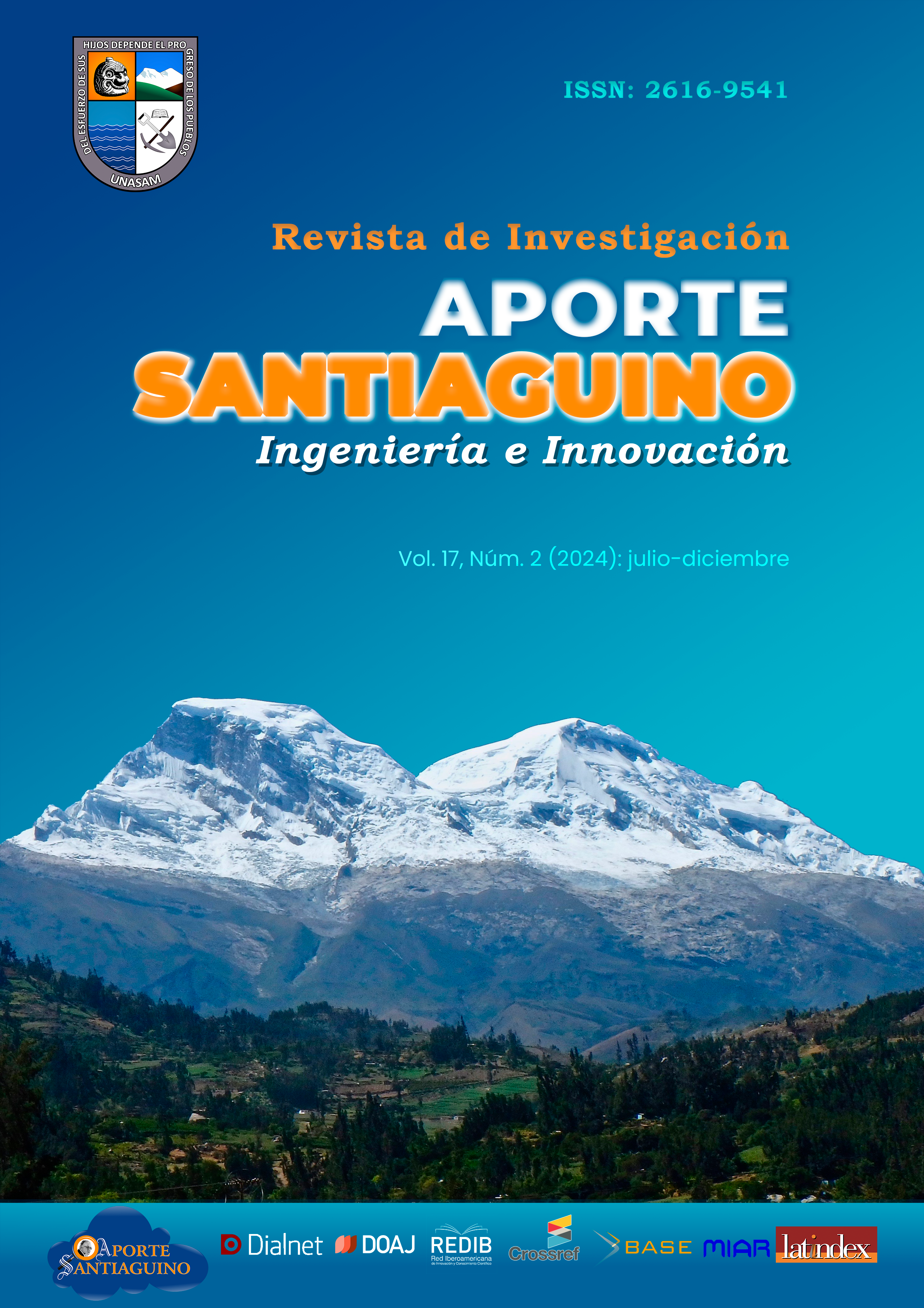Biodiseño de Materiales de Construcción Sostenibles
DOI:
https://doi.org/10.32911/as.2024.v17.n2.1183Keywords:
Biodiseño, Sustentabilidad, Construcción, MaterialesAbstract
The negative incidents generated by constructions in the natural environment have forced the construction sector to adopt new sustainable practices to address this problem, hence the need to look for biodesign alternatives for key materials to change conventional practices for more sustainable ones. In this sense, the relevance of this study lies in the primary objective of analyzing the cases of biodesign of materials for construction as a sustainability strategy; For this purpose, a qualitative and exploratory study was undertaken, in which a series of biodesign cases were examined through a documentary analysis in the international and national context. The results found evidenced a series of biodesigns from renewable sources that turned out to be viable and very effective for construction, by offering not only adequate physical and mechanical properties, but also crucial means to address pollution from the brick industry, mitigate damage to the environment, minimize waste generation and promote plastic recycling. In conclusion, the analysis of biodesigns for construction revealed important findings at the international and national level. At a global level, promising options were found with a broad focus on specific topics. At the national level, although there is a lack of research, significant advances were identified. It is recommended to focus on developing new sustainable materials and carry out long-term studies to evaluate their environmental impact.
Downloads
References
Adamatzky, A., Wösten, H. A. B., & Dessi-Olive, J. (2022). Strategies for Growing Large-Scale Mycelium Structures. Biomimetics, 7(3), 129. 10.3390/BIOMIMETICS7030129
Alquezar Facca, C., Carvalho, A. R., Tavares de Moraes, V., & Rocha, C. (2023). Biodiseño y Bioaprendizaje: Diálogo con sistemas naturales y complejos. Cuadernos del Centro de Estudios de Diseño y Comunicación, (178). https://doi.org/10.18682/cdc.vi178.8643
Alvarez Quispe, C. D., & Orado Paredes, A. Y. (2023). Influencia de la Sustitución Porcentual del Cemento por Ceniza de Cáscara de Arroz en Propiedades Físico–Mecánicas del Concreto -2023. Ciencia Latina Revista Científica Multidisciplinar, 7(4), 6246-6261. https://doi.org/10.37811/cl_rcm.v7i4.7409
Beatty, D. N., Williams, S. L., & W. Srubar, W. (2022). Biomineralized Materials for Sustainable and Durable Construction. Annual Review of Materials Research, 52, 411-439. https://doi.org/10.1146/annurev-matsci-081720-105303
Booth, P., & Jankovic, L. (2022). Novel biodesign enhancements to at-risk traditional building materials. Front Built Environ, 8, 1–12. 10.3389/fbuil.2022.766652
Carmona, F. (2024). Innovación en Arquitectura: ideas, tendencias y casos de éxito. Fuen Carmona. https://fuencarmona.com/innovacion-en-arquitectura-ideas-tendencias/
Carter, M., Tuttle, M., Mancini, J., Martineau, R., Hung, C., & Gupta, M. (2023). Microbially Induced Calcium Carbonate Precipitation by Sporosarcina pasteurii: a Case Study in Optimizing Biological CaCO3 Precipitation. Applied and Industrial Microbiology, 89(8), 1–17. https://doi.org/10.1128/aem.01794-22
Chen, L., Zhang, Y., Chen, Z. et al. Biomaterials technology and policies in the building sec-tor: a review. Environ Chem Lett, 22, 715–750 (2024). https://doi.org/10.1007/s10311-023-01689-w
Esat, R., & S. Ahmed-Kristensen, S. (2018). Classification of Bio-Design Applications: To-wards a Design Methodology. DS 92 Proceedings of the DESIGN 2018 - 15th Interna-tional Design Conference. https://doi.org/10.21278/idc.2018.0531
Fahim, G., Rahman, A., Amer, H., & Alyousef, R. (2021). Development of a sustainable concrete incorporated with effective microorganism and fly Ash: Characteristics and modeling studies. Construction and Building Materials, 285, 1-18.
1016/j.conbuildmat.2021.122899.
Fouad, D., Farag, M. (2019). Design for Sustainability with Biodegradable Composites. En E. Yasa, M. Mhadhbi, & E. Santecchia (Ed.), Design and Manufacturing. 10.5772/INTECHOPEN.88425
Franco, J., & Cusme, C. (2022). La gestión integral de proyectos de construcción, basada en la sostenibilidad y la innovación. South Florida Journal of Development, 3(4), 5647-5663. 10.46932/sfjdv3n4-125
García, D. E. (2021). Arquitectura y urbanismo sustentable.
Goidea, A., Floudas, D., & Andréen, D. (2022). Transcalar Design: An Approach to Bi-odesign in the Built Environment. Infrastructures, 7(4), 50. https://doi.org/10.3390/infrastructures7040050
Hernández-Sampieri, R., & Mendoza Torres, C. P. (2018). Metodología de la investigación: las rutas cuantitativa, cualitativa y mixta. McGrawHill Education.
Hernández-Zamora, M. F., Jiménez-Martínez, S., & Sánchez-Monge, J. (2021). Materiales alternativos como oportunidad de reducción de impactos ambientales en el sector construcción. Tecnología en Marcha, 34(2), 3–10. https://doi.org/10.18845/tm.v34i2.4831
Hu, Y., Liu, W., Zhang, Q., Hu, X., & Hu, X. (2022). Investigation of Cement Prepared with Microencapsulated Microorganisms. ACS Omega, 7(3), 2947−2959 10.1021/acsomega.1c05971
Kamionka, L.W. (2022). Sustainable design in terms of use of environmentally friendly ma-terials. Środowisko Mieszkaniowe/Housing Environment, 41(1), 65-77. https://doi.org/10.4467/25438700sm.22.031.17154
Lal, S. (2022). Green Building Design Concept: A Sustainable Approach. Journal of Mechanical and Construction Engineering (JMCE), 2(1), 1–10. 10.54060/JMCE/002.01.003
Lee, C., Lee, H., & Bin Kim, O. (2018). Biocement Fabrication and Design Application for a Sustainable Urban Area. Sustainability, 10, 1–17. 10.3390/su10114079
Lujan, M. (27 de setiembre de 2024). Innovaciones en la construcción para reinventar el sector. Innovar o Morir.https://innovaromorir.com/innovaciones-en-la-construccion-reinventa-sector/
Maraveas, C. (2020). Production of Sustainable Construction Materials Using Agro-Wastes. Materials, 13(2), 262. 10.3390/MA13020262
Narendhran, P.S., Parthasarathy, S., Vignesh, S., Mouliyarasu, A., Prashanth, S., Jayaraman, A., & Vasudevan, M. (2022). Envisaging Sustainable Building Materials for Earthen Construction Practices. IOP Conference Series: Earth and Environmental Science, 1130, 012015. 10.1088/1755-1315/1130/1/012015
Niyasom, S., & Tangboriboon, N. (2021). Development of biomaterial fillers using eggshells, water hyacinth fibers, and banana fibers for green concrete construction. Construction and Building Materials, 283, 1–13. 10.1016/j.conbuildmat.2021.122627
Ñaupas, H., Valdivia, M. R., Palacios, J. J., Romero, H. E. (2018). Metodología de la investigación Cuantitativa-Cualitativa y Redacción de la Tesis (5ª. edición). Ediciones de la U.
Page, M. J., McKenzie, J. E., Bossuyt, P. M., Boutron, I., Hoffmann, T. C., Mulrow, C. D., Shamseer, L., Tetzlaff, J. M., Akl, E. A., Brennan, S. E., Chou, R., Glanville, J., Grimshaw, J. M., Hróbjartsson, A., Manoj M. Lalu, Tianjing Li, Elizabeth W. Loder, Evan Mayo-Wilson, Steve McDonald … Alonso-Fernández, S. (2021). Declaración PRISMA 2020: una guía actualizada para la publicación de revisiones sistemáticas. Revista Española de Cardiología, 74(9), 790-799. https://doi.org/10.1016/j.recesp.2021.06.016
Pearlmutter, D., Theochari, D., Nehls, T., Pinho, P., Piro, P. Korolova, A., Papaefthimiou, S., Garcia Mateo, M. C., Calheiros, C., Zluwa, I., Pitha, U., Schosseler, P. Florentin, Y., Ouannou, S., Gal, E., Aicher, A., Arnold, K., Igondová, E., Pucher, B. (2020). Enhancing the circular economy with nature-based solutions in the built urban environment: green building materials, systems and sites. Blue-Green Systems, 2(1), 46–72. https://doi.org/10.2166/bgs.2019.928
Răut, I., Călin, M., Vuluga, Z., Oancea, F., Paceagiu, J., Radu, N., Doni, M., Alexandrescu, E., Purcar, V., Gurban, A.-M., Petre, I., & Jecu, L. (2021). Fungal Based Biopolymer Composites for Construction Materials. Materials, 14(11), 2906.
https://doi.org/10.3390/ma14112906
Reinhardt, O., Ihmann, S., Ahlhelm, M., & Gelinsky, M. (2023). 3D bioprinting of mineralizing cyanobacteria as novel approach for the fabrication of living building materials. Front Bioeng Biotechnol, (11), 1–14. 10.3389/fbioe.2023.1145177
Scardifield, K., McLean, N., Kuzhiumparambil, U., Ralph, P. J., Neveux, N., Isaac, G., & Schork, T. (2023). Biomasonry products from macroalgae: A design driven approach to developing biomaterials for carbon storage, Journal of Applied Phycology, 36, 935–950. 10.1007/s10811-023-03051-7
Scrivener, K. L., John, V. M., & Gartner, E. M. (2018). Eco-efficient cements: Potential economically viable solutions for a low-CO2 cement-based materials industry. Cement and Concrete Research, 114, 2-26. https://doi.org/10.1016/j.cemconres.2018.03.015
Vargas, M. (s.f.). Proyectan masificar uso de cascarilla de arroz para construir viviendas seguras a bajo costo, Andina. https://andina.pe/agencia/noticia-proyectan-masificar-uso-cascarilla-arroz-para-construir-viviendas-seguras-a-bajo-costo-278583.aspx
Vergara, I. (2021). Crean ladrillos ecológicos resistentes al frío y a la humedad para zonas altoandinas,” Andina. https://andina.pe/agencia/noticia-crean-ladrillos-ecologicos-resistentes-al-frio-y-a-humedad-para-zonas-altoandinas-856980.aspx?fbclid=IwAR0ZUW3QBrixEQDa6aMdw9aFflyFDQ2SKiK0ExeSCPtCvzO-gqG8FkSHB60_aem_AeCY7-BQ2i7otXavFyeDaAUDhVTrydvP3CXZyWQGMzxpMANhN6M4TsxcMyhd6Ngn5T83LlYRMrgQxe4OnZ7yT6bq
Xiong, X., Wang, L., Yu, K. M., & Tsang, D. C. (2020). Sustainable carbohydrate-derived building materials, Bio-based Materials and Biotechnologies for Eco-efficient Construction, 285–304. 10.1016/B978-0-12-819481-2.00014-3
Yadav, M., & Saini, A. (2022). Opportunities & challenges of hempcrete as a building material for construction: An overview. Materials Today: Proceedings, 65(2), 2021–2028. https://doi.org/10.1016/j.matpr.2022.05.576
Yang, Y. (2019). Bio-based flame retardant for sustainable building materials [Tesis doctoral, Universitat Politècnica de Catalunya]. http://hdl.handle.net/10803/668530
Yuan, P. F., Chai, H., Yan, C., & Leach, N. (2021). The 3rd International Conference on Compu-tational Design and Robotic Fabrication (CDRF 2021). https://link.springer.com/book/10.1007/978-981-16-5983-6
Zuta, L. (s.f.). Piura: científicos fabrican ladrillos y otras piezas constructivas con plástico reciclado. Andina. https://andina.pe/agencia/noticia-piura-cientificos-fabrican-ladrillos-y-otras-piezas-constructivas-plastico-reciclado-890674.aspx
Downloads
Published
How to Cite
Issue
Section
License
Copyright (c) 2025 Diego Jesus Aranda

This work is licensed under a Creative Commons Attribution 4.0 International License.




















